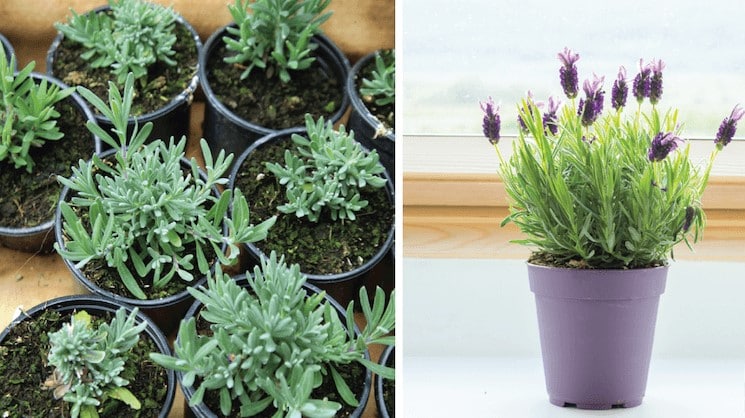Growing lavender at home is a rewarding way to bring the benefits of this fragrant herb into your everyday life.

Lavender, with its soothing fragrance and beautiful purple blooms, is much more than just an ornamental plant.
Known for its calming properties, lavender has been used for centuries to help alleviate stress, anxiety, and promote relaxation.
Growing lavender at home not only adds a touch of elegance to your living space but also provides natural aromatherapy every time you enter your home.
In this article, we’ll guide you through the steps to grow lavender at home, ensuring you have a lush and fragrant source of calm and tranquility year-round.
Why Lavender is Great for Stress Relief
Lavender contains compounds like linalool and linalyl acetate, which have been shown to have calming effects on the nervous system.
These compounds are released into the air from the plant’s flowers, creating a relaxing environment that can help reduce anxiety, improve sleep quality, and boost mood.
By growing lavender at home, you can enjoy its benefits naturally, every day. Here’s how to grow and care for lavender to ensure it thrives in your home environment.
Choosing the Right Lavender Variety
There are several varieties of lavender, but not all are suited for indoor growth. Here are a few that are ideal for growing at home:
- English Lavender (Lavandula angustifolia): The most common type, known for its sweet fragrance and ability to thrive in a variety of climates.
- French Lavender (Lavandula dentata): Slightly more tolerant of heat, French lavender has serrated leaves and a milder fragrance.
- Spanish Lavender (Lavandula stoechas): Recognizable by its distinctive “rabbit ear” bracts on top of the flowers, this variety is also heat-tolerant.
Choose a variety that suits your climate and the conditions in your home. English lavender is often the easiest to grow indoors due to its adaptability and strong fragrance.
Step-by-Step Guide to Growing Lavender at Home
1. Select the Right Pot and Soil
Lavender needs well-draining soil and adequate space for its roots to grow. Choose a pot that is at least 12-16 inches in diameter with drainage holes at the bottom to prevent waterlogging, which can cause root rot.
Tips:
- Use a sandy or gritty potting mix designed for Mediterranean plants or cacti. You can also mix regular potting soil with sand or perlite to improve drainage.
- Place a layer of gravel or small stones at the bottom of the pot to further enhance drainage.
2. Find the Perfect Location
Lavender loves sunlight. It needs at least 6-8 hours of direct sunlight per day to thrive and produce its fragrant flowers.
Tips:
- Place your lavender plant near a south-facing window where it will receive plenty of sunlight.
- If you don’t have a sunny window, consider using a grow light to supplement natural light.
3. Watering Your Lavender
Lavender is drought-tolerant and prefers to be on the drier side. Overwatering is a common mistake that can lead to root rot, so it’s essential to water your plant correctly.
Tips:
- Water lavender when the top inch of soil feels dry to the touch.
- Water deeply, but infrequently, allowing excess water to drain out of the pot. Make sure the soil dries out between waterings.
4. Fertilize Sparingly
Lavender doesn’t require much fertilizer. In fact, too much nitrogen can cause the plant to produce more foliage and fewer flowers.
Tips:
- Use a diluted, balanced fertilizer (like a 10-10-10 formula) once or twice during the growing season.
- Alternatively, add a handful of compost to the potting mix once a year to provide a slow-release source of nutrients.
5. Pruning and Harvesting Lavender
Regular pruning helps maintain the shape of the lavender plant, promotes bushier growth, and encourages more blooms.
Tips:
- Prune lavender in early spring or after the first flush of flowers has faded. Cut back about one-third of the plant, being careful not to cut into the woody stems.
- Harvest lavender flowers just as they start to open for the strongest scent. Cut stems just above the leaves and use them fresh, dried, or in homemade sachets.
6. Maintain Good Air Circulation
Lavender thrives in environments with good air circulation, which helps prevent mold and mildew.
Tips:
- Avoid placing the lavender plant in a stuffy or overly humid room.
- If you’re growing lavender indoors, consider using a small fan to improve air circulation around the plant.
Additional Tips for Growing Lavender Indoors
- Repot When Necessary: Lavender plants may need to be repotted every 2-3 years. Look for signs like roots growing out of the drainage holes or slow growth. When repotting, choose a pot that is 1-2 inches larger in diameter.
- Control Pests: Lavender is relatively pest-resistant, but it can occasionally attract spider mites or aphids. If you notice pests, use a natural insecticidal soap or a gentle stream of water to wash them off.
- Monitor Temperature: Lavender prefers temperatures between 60-70°F (15-21°C) during the day and slightly cooler at night. Avoid placing your plant near heating vents or in drafty areas.
Creative Ways to Use Lavender for Stress Relief
Now that you’re growing lavender at home, here are a few ways to use it to help reduce stress and anxiety:
1. Lavender Sachets
Make small sachets filled with dried lavender flowers and place them under your pillow, in your drawers, or around the house. The calming scent will help promote relaxation and improve sleep quality.
2. Lavender Essential Oil
Use fresh lavender flowers to make your own essential oil. Add a few drops of the oil to a diffuser or bath to create a soothing environment.
3. Lavender Tea
Brew a calming tea with fresh or dried lavender flowers. Lavender tea is known to reduce stress, promote relaxation, and improve sleep.
4. Homemade Lavender Candles
Use lavender flowers or essential oil to create homemade candles. The gentle scent will fill your home with a relaxing aroma, perfect for unwinding after a long day.
Growing lavender at home is a rewarding way to bring the benefits of this fragrant herb into your everyday life.
With the right care and attention, your lavender plant will thrive, providing a constant source of natural aromatherapy to help relieve stress and anxiety.
Whether you use it in sachets, teas, or simply enjoy its scent, lavender is an excellent addition to any home for creating a peaceful, calming atmosphere.


